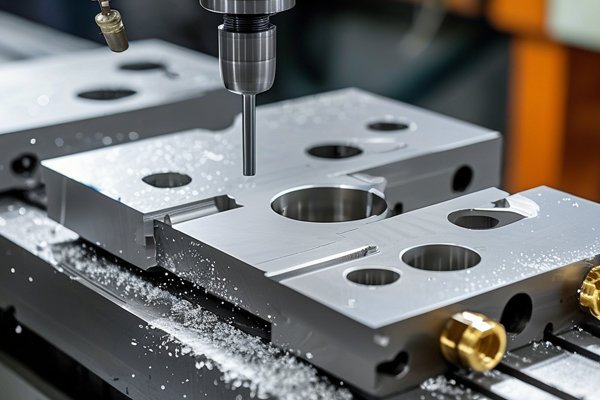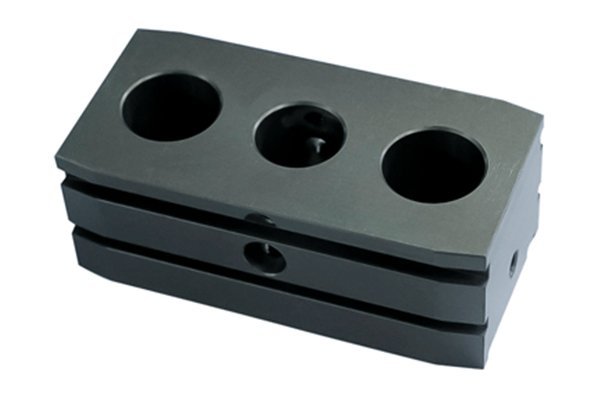—
Did you know that the selection of materials can influence not just the performance of a machined part, but also the overall success of a manufacturing project? In fact, a recent study found that 39% of product failures can be traced back to inadequate material selection. As industries rapidly evolve, the demand for high-performance materials in CNC (Computer Numerical Control) machining is at an all-time high. With advancements in technology and manufacturing processes, understanding the right material for your CNC machining needs becomes pivotal in enhancing performance, durability, and cost-efficiency.
In this comprehensive blog, we will delve into evaluating the impact of high-performance material selection on CNC machining. We will explore key materials, their properties, and how they interact with the CNC process to improve outcomes. By the end of this article, you will have a deep understanding of material selection and its critical role in the success of your CNC machining projects.
—
High-performance materials are those that have significantly superior characteristics compared to standard materials. These materials often exhibit excellent mechanical and thermal properties, corrosion resistance, and a unique ability to maintain structural integrity under extreme conditions.
1.1 Types of High-Performance Materials
1.2 Key Properties to Consider
When selecting high-performance materials, consider the following properties:
—
CNC machining is a manufacturing process that utilizes computer-controlled machines to create parts from various materials, offering precise cuts and detailed shapes. The process generally involves several stages:
Each of these stages can be significantly affected by the type of material chosen.
—
When evaluating the impact of material selection on CNC machining, a structured approach aids in understanding the complexities involved. Here’s a detailed solution structure:
3.1 Define Project Requirements
Start by outlining the objectives of your CNC project. These could include:
3.2 Assess Material Options
Evaluate potential materials based on:

3.3 Conducting Machinability Testing
Before finalizing material selection, conduct machinability tests using prototypes. Monitor:
3.4 Analyze Performance in Real-World Conditions
Understanding how selected materials perform under actual operational conditions provides invaluable insights. Gather data on:
3.5 Feedback Loop Integration
Develop a feedback mechanism to consider real-world performance insights when selecting materials in future projects. Use lessons learned to create a material selection database for reproducibility.
—
To fully harness the benefits of high-performance materials, adhering to best practices throughout the process is crucial.
4.1 Collaborate with Material Engineers
Working closely with material scientists and engineers can help understand the nuances of material behavior during machining. They can provide guidance on best practices and potential pitfalls.
4.2 Utilize Advanced Simulation Tools
Leverage CAE (Computer-Aided Engineering) software to simulate how different materials will perform under specific machining conditions. This can preemptively address potential errors.
4.3 Invest in Tooling Technology
Selecting the right tooling for specific materials—consider coatings and geometries optimized for high-performance materials—directly affects machining efficiency and part quality.
4.4 Continuous Learning and Adaptation
Keep updated on latest developments in materials science and CNC machining to make informed decisions. Attend workshops and conferences, and engage with trade organizations to stay ahead of industry trends.
—
Let’s take a look at a couple of industry examples where high-performance material selection dramatically influenced CNC machining outcomes.
5.1 Aerospace Components
In an aerospace project involving the manufacture of turbine blades, the use of nickel-based superalloys allowed for excellent thermal resistance and fatigue strength. Proper evaluation of these materials led to reduced failure rates and longer operational lifetimes.
5.2 Medical Devices
A medical device manufacturer selected PEEK for spinal implants. PEEK’s biocompatibility and strength ensured reliability, with rigorous testing confirming that the material outperformed alternatives in fatigue resistance under load.
—
In conclusion, choosing the right high-performance material for CNC machining is a critical aspect that heavily influences a project’s success. By following a systematic evaluation process, utilizing best practices, and integrating ongoing feedback, manufacturers can better align their material selections with the specific demands of their projects.
In a rapidly evolving industry, the implications of material selection extend beyond production—it cascades into quality, performance, and ultimately customer satisfaction. As you navigate your CNC machining projects, remember that every detail, including the choice of materials, has a meaningful impact. This blog serves as a reminder of the significance of thoughtful material selection in enhancing CNC machining outcomes, contributing to both innovation and excellence in manufacturing.
—
Remember, your material choices are more than just decisions—they’re the foundation upon which your manufacturing success stands.






